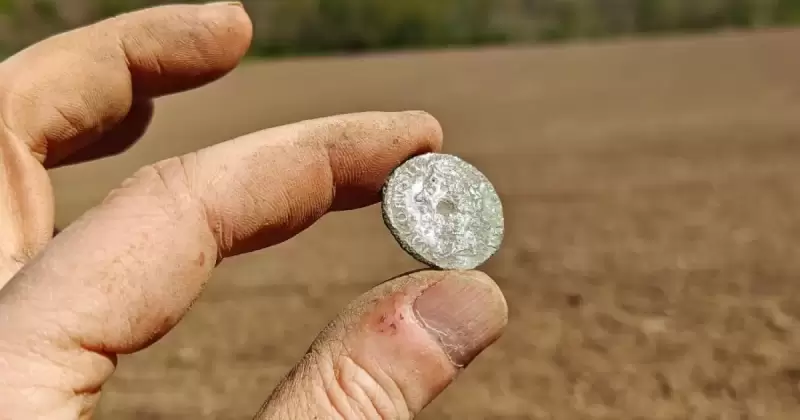 |
|
 |
|
 |
|
 |
|
 |
|
 |
|
 |
|
 |
|
 |
|
 |
|
 |
|
 |
|
 |
|
 |
|
 |
|
Cryptocurrency News Articles
James II shilling coin dating back to 1690 found in a field in Roslin
Apr 25, 2025 at 10:16 pm
The coin, a James II shilling, was found in a field in Roslin by Jaroslaw Musialkowski and dates back to 1690.

A coin, identified as a James II shilling and dating back to 1690, was recently discovered in a field in Roslin by Jaroslaw Musialkowski, an avid history enthusiast.
According to Musialkowski, who is originally from Poland but now calls Scotland home, the coin could have been issued as payment for the war in Ireland, also known as the Williamite War, and could be exchanged for silver at the time.
To confirm his discovery, Musialkowski was presented with a certificate from Treasure Trove, verifying the coin's status as a Bronze Age artefact.
This isn't Musialkowski's first brush with historical finds. Back in 2019, he unearthed a haul of silver coins buried on the site of the Battle of Roslin, which took place in 1303.
The coins were discovered in a small hole, hidden beneath a tree on the edge of a small clearing. The coins are believed to be in connection with the 1303 battle and may have been payment for mercenaries fighting in the First War of Scottish Independence.
Returning to Roslin, Musialkowski described his latest find as "not a common coin nor scarce one, but still a truly amazing find". He noted that while the coin isn't particularly rare or valuable, it's a significant discovery nonetheless.
"Most people don't even realise, but Roslin is an outstanding place. There are treasures hidden and lost, from the English army wages in 1303 worth today in the region of eight to nine digits in cash for completing The Rosslyn Chapel," Musialkowski added.
Located in the village of Roslin, the chapel was founded by William Sinclair, the first Earl of Caithness, with a groundbreaking ceremony in 1456. The chapel was later completed by his son, Oliver.
The Sinclair family was a massively wealthy and influential family in Scotland during the medieval period, and there have been several archaeological findings in Roslin linked to the family, including pottery, silver coins and skeletal remains.
Disclaimer:info@kdj.com
The information provided is not trading advice. kdj.com does not assume any responsibility for any investments made based on the information provided in this article. Cryptocurrencies are highly volatile and it is highly recommended that you invest with caution after thorough research!
If you believe that the content used on this website infringes your copyright, please contact us immediately (info@kdj.com) and we will delete it promptly.
-

-

-

- Z Squared, a Firm That Specializes in Mining Dogecoin (DOGE), Is Merging with Biopharmaceutical Company Coeptis (COEP)
- Apr 26, 2025 at 02:45 am
- The merger will enable the resulting company to keep DOGE mining operations going, while Coeptis' pharmaceutical business will be spun out and operated separately.
-

-

-

- Top tokens in the Solana ecosystem continued their bullish trend this week as sentiment in the crypto industry improved.
- Apr 26, 2025 at 02:40 am
- Solana (SOL) price jumped for four straight days, reaching a high of $155, its highest level since March 3. It has jumped by over 60% from the lowest level this year.
-

-

- Fartcoin (FARTCOIN) Approaches a Major Inflection Zone
- Apr 26, 2025 at 02:35 am
- Fartcoin has approached a major inflection zone after completing a potential Elliott Wave structure. The token’s recent price action suggests a shift in market dynamics, and traders are watching closely for signs of a larger corrective move.
-

- Trump Coin (TRUMP) Has Soared Impressively, Capturing the Attention of Both Crypto Speculators and Meme Coin Enthusiasts.
- Apr 26, 2025 at 02:30 am
- Trump Coin has soared impressively in the past week, capturing the attention of both crypto speculators and meme coin enthusiasts. This rapid growth has prompted fresh interest in meme coins, especially new presales that offer innovative features beyond hype. By Cointelegraph.




























































